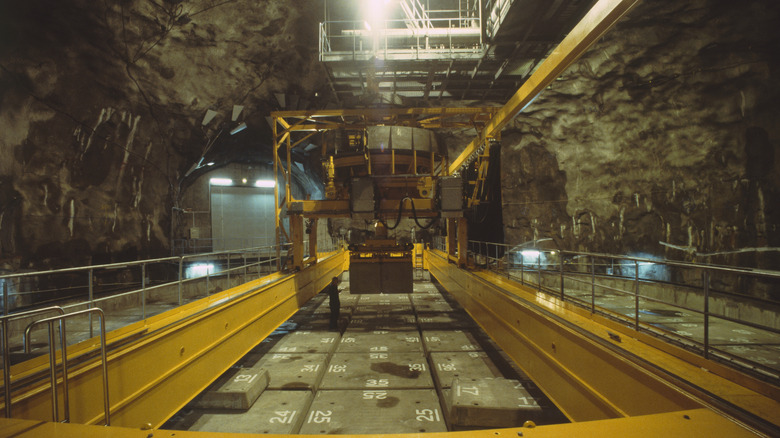Nuclear power plants are used primarily to generate electricity, and while they’re often thought of as a cleaner energy source, there is a drawback. These power plants produce waste. This waste is radioactive and, therefore, highly dangerous. That said, there is a common misconception that nuclear waste is dangerous forever, but that’s not entirely true. The amount of time that the waste is radioactive depends on the type, and it doesn’t necessarily ever go away.
The radioactivity of nuclear waste decays over time. Most nuclear waste becomes safe enough to handle in just a few decades and is disposed of in shallow facilities, decaying back to the same levels of radioactivity originally mined state (which, in all fairness, can still carry some level of hazard dependent on concentration). A very small portion stays radioactive for thousands of years and needs deep, long-term storage. Though this can sound quite scary, it’s important to note that many other industries create dangerous waste, and some like mercury or cadmium stay dangerous forever.
With interest in nuclear power on the rise — the U.S. government is even intending to establish next-gen nuclear reactors – it’s important to understand the various methods of how nuclear waste is stored and where, including deep underground and in short-term storage facilities. And though there have been other methods investigated for nuclear waste storage, to this day, they have not been implemented.
Where nuclear waste is stored
There are different types of facilities to safely dispose of nuclear waste, and the method depends largely on how long the waste remains radioactive. Low-level waste and shorter-lived intermediate waste are commonly placed in near-surface disposal sites, either at ground level or in shallow underground caverns. These facilities use engineered vaults that are filled, sealed, and eventually capped with protective layers of soil and impermeable membranes. These types of facilities are in operation in places such as the U.K., France, Spain, Japan, the U.S., Sweden, and Finland.
For more dangerous nuclear waste, the solution is deep geological disposal. These underground facilities can be up to a few miles down and rely on a multi-barrier system for safety. The waste container, made of engineered materials like bentonite clay, and the surrounding geology all work together to prevent radioactive material from reaching the surface. Many countries have active deep-geological projects. There is even a nuclear underground tomb that can store waste for 100,000 years.
Some countries also use interim storage while long-term repositories are built. High-level waste and used reactor fuel often spend years cooling in pools before moving into dry-storage casks made of steel and concrete. These casks can sit above ground or partially below and are designed to safely contain heat-producing fuel for decades.
Nuclear waste disposal ideas that haven’t been used
There have been other ideas proposed for storing nuclear waste that are not currently in use. One such option was launching nuclear waste into space. Due to the high cost of rockets, this was only considered for the most dangerous of nuclear waste. Though NASA looked into this option in the 1970s and 1980s with one proposed idea involving putting nuclear waste into the sun, the idea was ultimately abandoned. The risk of something going wrong with a launch while carrying such dangerous cargo was determined to be too high to make the effort worth it.
Another researched idea was to put nuclear waste in ocean trenches within subduction zones. This method was never implemented because of the difficulty in reaching these deep underwater zones. Also, though sea disposal was once used, it is now forbidden under international agreements, which means subduction zone disposal is also unlawful. There was some consideration put into the potential disposal of nuclear waste in ice sheets. The Antarctic Treaty of 1959 has fueled the rejection of this idea, however. This treaty emphasizes that Antarctica is to be used only for peaceful purposes, that scientific investigation in the area is built upon cooperation, and that Antarctica cannot be claimed as a sovereign territory.
Since nuclear energy, such that which is used on nuclear-powered American military aircraft carriers, seems like it will always be with us, so will its waste. Though it may never fully go away, it can at least be safely contained.











